Once
source types and sources have been created, individual samples can be associated with them. This topic describes how to make those associations. For a hands-on walkthrough of this process, complete the
Tutorial: Learn Sample Manager.
Associate Samples with Sources During Sample Creation
When you create new samples, you will see an
Add Source button in the creation wizard if any source types have been created in the system. If the Sample Type you are adding has any
source aliases, source columns for them will be added by default.
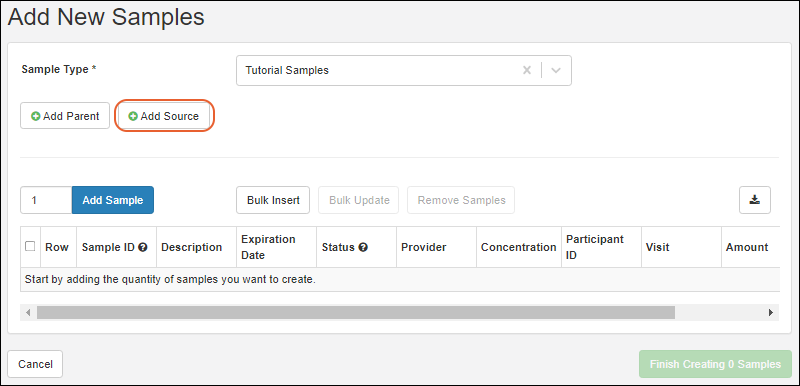
Note that if no source types have been created yet, you will not see this button in the user interface.
To add a source for the samples you are creating, click
Add Source. Select the source type from which the source will be selected.

When you add a source, a new column is added for the new "parents" (i.e. Sources) of the samples you are creating.
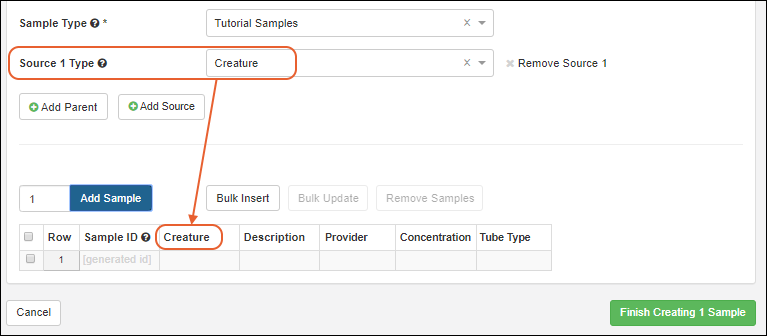
If more than one type of source is defined in the system, the
Add Source button will remain enabled so that you can add as many types of source as needed. For example, you might have both a biological source organism, and a physical source lab.
Populate the grid as
when creating samples, making use of the bulk insert and update options if appropriate. When you start typing into the source parent field (labelled "Creature Parents" in the above), it will filter a listing of all sources of that type from which you can select one or more.
When ready, click
Finish Creating Samples as before.
Create Samples from Sources
You can also create, or derive, new samples from selected sources starting from the source grid. This process is very similar to creating new samples from other "parent" samples, and the same terminology is used in the popup panel.
Open the grid listing the Sources, then select one or more to use as "parent(s)" of the new samples. Select
Create Samples > [Sample Type Name]. (Note that if you select more than 1000 rows, the option to create samples is disabled.)
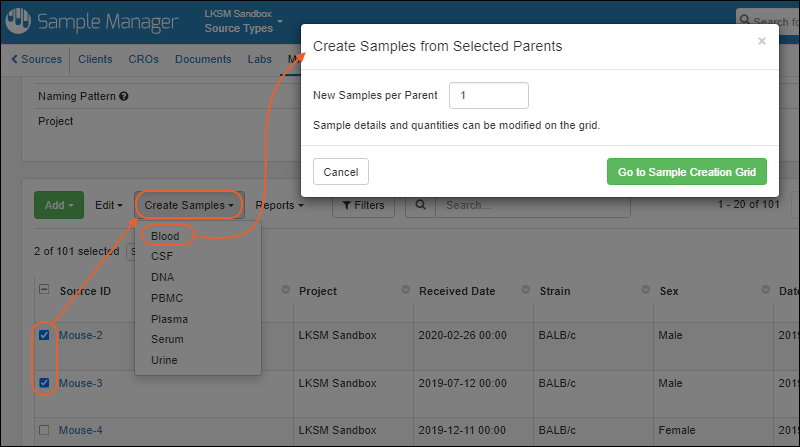
You can also go to the overview page for the specific source "parent" you want to use and select
> Create Samples > [Sample Type Name].
In the popup, enter the number of
New samples per parent to create, then click
Go to Sample Creation Grid. You'll see the grid prepopulated with rows showing the associated source(s). For each source you selected, you'll have the specified number of rows. Continue to edit sample details in the grid before finishing creation.
View Source Association
Click the name of one of the newly created samples to open the overview page for that sample.
Scroll down and notice that the
Source Details section has been populated with details about the source(s) you linked when you created it.
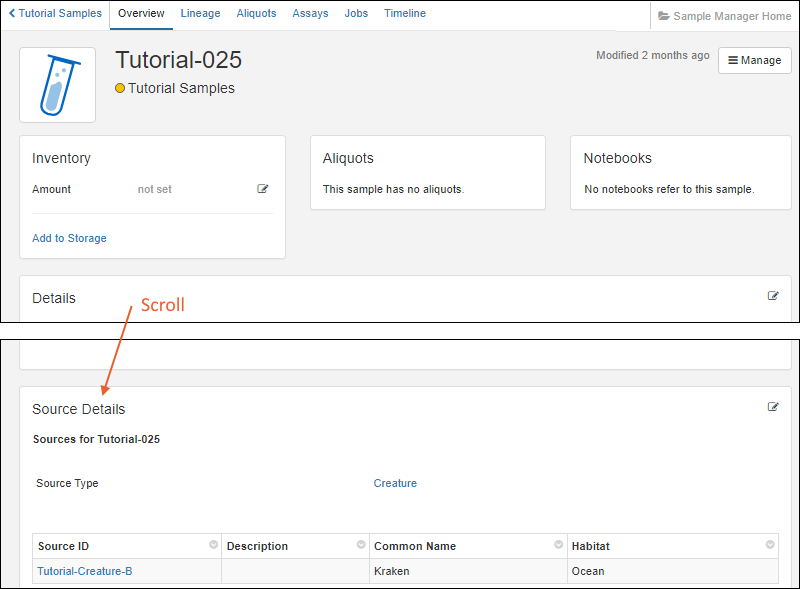
View Source Lineage
Click the
Lineage tab to see that the source is also represented in the lineage grid. Click the node for the source to see if there are other samples derived from that specific source.
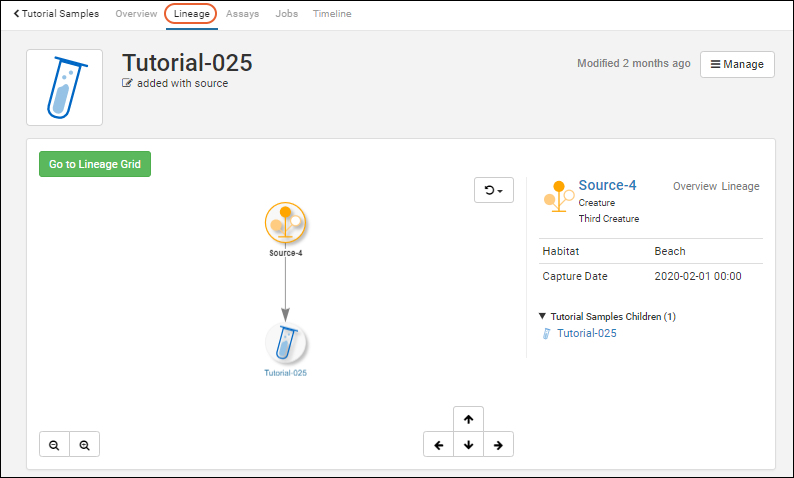
Associate Existing Samples with Sources
If you create new sources after creating samples, you can add the association from the sample details page. In the next section, see how to
edit existing source associations.
Open a sample type using the main menu, then an individual sample by clicking the Sample ID. You will see the
Source Details (if any). Click the
icon to edit the source associations for this sample.
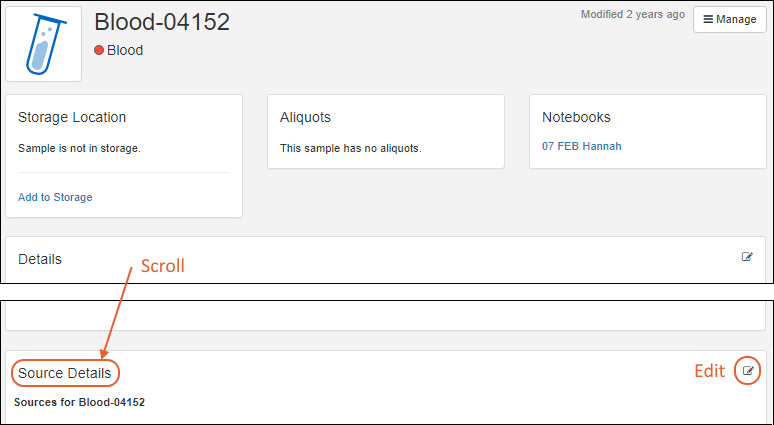
This will open an editor panel similar to that in the sample creation wizard. Select the
Source Type you want to associate.
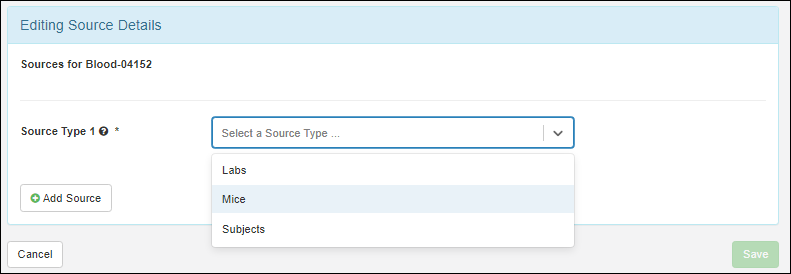
This will add an entry box for
Source IDs. Click to select from the menu; type ahead to narrow the choices. You can select more than one source ID for this field.
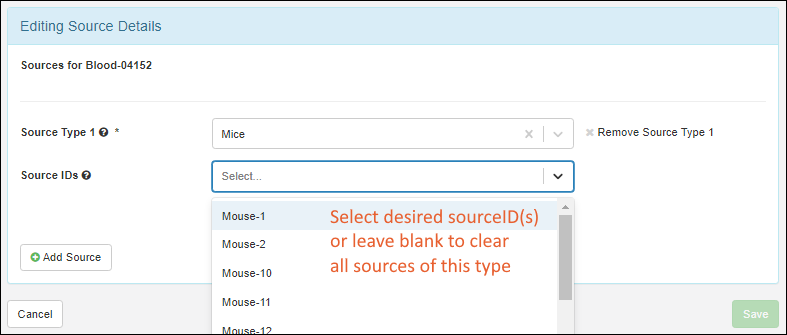
Note that if more than one source type is defined in the system, the
Add Source button would remain activated allowing you to add sources of different types for the sample.
Click
Save when finished.
You can now
view the details and lineage for this sample and it's source(s) as described above.
Edit/Remove Source Associations
Open a sample type using the main menu, then an individual sample by clicking the Sample ID. Use the same
icon to edit existing source associations in the
Source Details section.
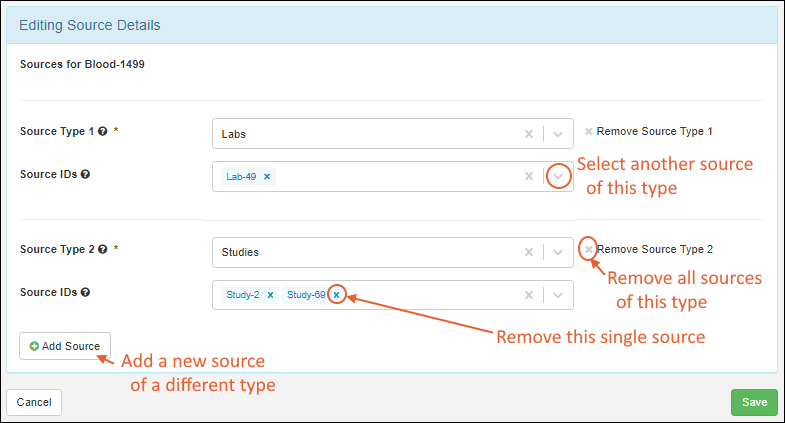
- Use dropdowns for Source IDs to add new sources of the types that are already associated.
- Click 'X' to delete individual sources or remove all sources of a given type
- Click Add Source to add new sources of another type.
Related Topics